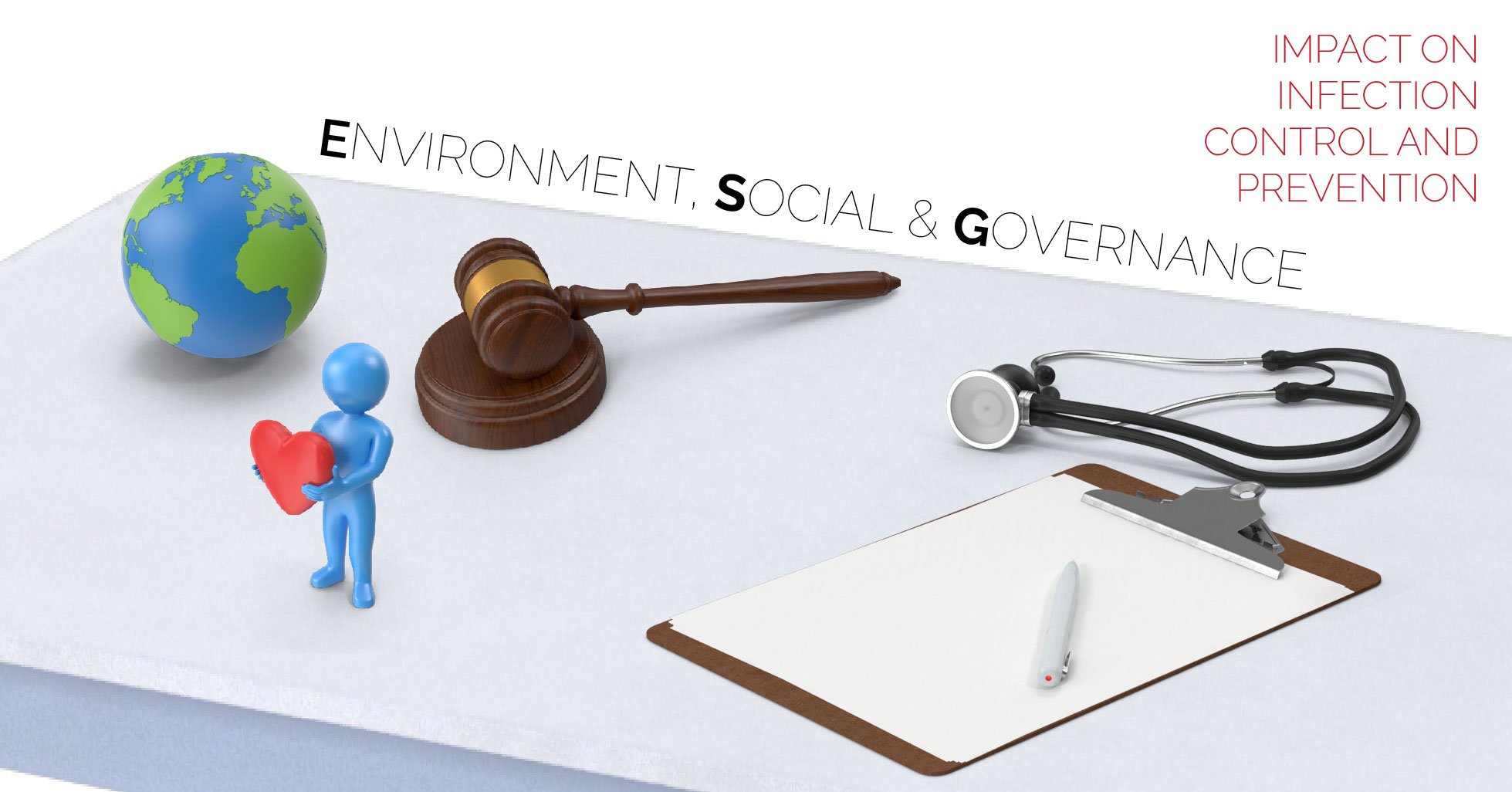ESG: Impact on Hospitals and Infection Control

 Over the past years, and with an uptick since COVID, the acronym "ESG" has been popping up in discussions related to investing, corporate values, and public accountability. Is a focus on "Environment, Social, and Governance" a new idea? How has the increased scrutiny affected the healthcare industry? And most specifically, how does it apply to the field of infection control and prevention?
Over the past years, and with an uptick since COVID, the acronym "ESG" has been popping up in discussions related to investing, corporate values, and public accountability. Is a focus on "Environment, Social, and Governance" a new idea? How has the increased scrutiny affected the healthcare industry? And most specifically, how does it apply to the field of infection control and prevention?
History of ESG
The first official use of the combined terms "Environment, Social, and Governance," or ESG, was in a UN report in 2004. As of this point, these three issues became required components of financial evaluations. But this focus was not the cause of a global emphasis on these principles, but rather the result of a growing pressure from the global population for companies to take these concerns seriously. In the two decades since this first report, corporate social responsibility has become an integral part of doing business.
What does ESG mean today?
In today's business world, ESG means a public commitment to the environment, to social issues such as equity and safety, as well as the the inclusion of diverse membership in governance. Part of a commitment to ESG is a public commitment alongside financial investment, with transparency about efficacy and results. While ESG is not an initiative with a end result, per se, programs need to demonstrate progress.
How does ESG impact healthcare as a whole?
Healthcare lags in implementation of ESG programs among all other industry sectors. It is a very low priority according to healthcare executives, and consumers have not put as much pressure on this sector to demonstrate a commitment. A big reason for this lag is that healthcare as an industry already emphasizes social concerns, from providing care to those in need, to working towards healthcare equity by addressing social determinants of disease. But there is room for improvement in the environmental impact of hospitals, from reducing waste to lowering carbon footprints. There is some progress in this area. Governance that demonstrates diversity and inclusion, however, has significant growth potential: Just 38% of hospital board members are female, and 32% of boards nationwide do not have even a single non-white member.
How does ESG impact infection control and prevention?
On one level, pathogens do not discriminate. They can hitch a ride on anyone and infect anyone. Where this equality does not exist is when it comes to which patients are a greater risk from poor outcomes, and which patients are more likely to be exposed to pathogens while receiving health care. In both cases, patients of color, patients facing poverty and homelessness, and patients receiving care from facilities with high infection rates are at greatest risk. Infection control and prevention programs (IP) need interventions that do not rely on a patient's background or a facility's infection rates.
IP, as compared to all other hospital departments, has faced far more scrutiny regarding environmental impact. Facilities are increasingly expected to explore cleaning products that are safer to use around staff and patients, that are manufactured and disposed of responsibly, and yet still keep pathogens and infections at bay. As a result, IP departments are increasingly using green products, avoiding ingredients banned for long-term exposure risks, and influencing design choices that are healthier for staff and patients alike.
Biocidal surfaces that use non-toxic materials such as copper can play a significant role in addressing both the social and environmental principles of ESG. When facilities invest in copper-infused surfaces such as EOScu, they "flatten the playing field," making every room cleaner and with lower bioburden, a way to equalize access to a safe patient environment. Environmental impact of products made in the USA is regulated, and as with products such as EOScu, many can be recycled easily. Copper is non-toxic to humans, while still able to actively and continuously kill harmful bacteria 24 hours a day, even after recontamination.
IP can also have an impact on governance, if department leaders take steps to ensure that all voices are heard, from environmental services workers to C-suite. In fact, IP is uniquely positioned to model diverse and inclusive governance by inviting physicians, nurses, technicians, staff, patients, and caregivers to the table to learn and educate about infection control practices.
So there might still be a lot of room for growth as healthcare integrates principles of ESG, but all the knowledge and community presence to be an inspiring force for change. Is your facility taking steps to integrate ESG? Share in the comments below!
![EOScu Logo - Dark - Outlined [07182023]-01](https://blog.eoscu.com/hubfs/Eoscu_June2024/Images/EOScu%20Logo%20-%20Dark%20-%20Outlined%20%5B07182023%5D-01.svg)




